Have you noticed how everything this year screams “faster and brighter”? OLED and QD‑OLED panels have jumped from niche toys to the new baseline, while dual‑mode 480 Hz tech (4K @ 240 Hz or 1080p @ 480 Hz on the same panel!) is suddenly real—just ask LG’s 32‑inch speed demon. Analysts say OLED shipments for PC monitors will triple again in 2025 thanks to those new, higher‑brightness WOLED panels from LG Display and Samsung Display.
And don’t forget the regional buzz: with the inaugural Olympic Esports Games confirmed for early 2025 and SEA Games qualifiers kicking off in June, local retailers have been dangling ludicrous deals faster than you can shout “last copy ah!"

Editor
Lloyd Kelly Miralles's Profile chevron_right

Expert
Roger Siow chevron_right
Table of Contents
Comparison Table
| Product | Product Image | Price (SGD) | Where To Buy | Processor / Scaler | Display Spec | Weight |
|---|---|---|---|---|---|---|
| ASUS ROG Swift PG27AQDM |
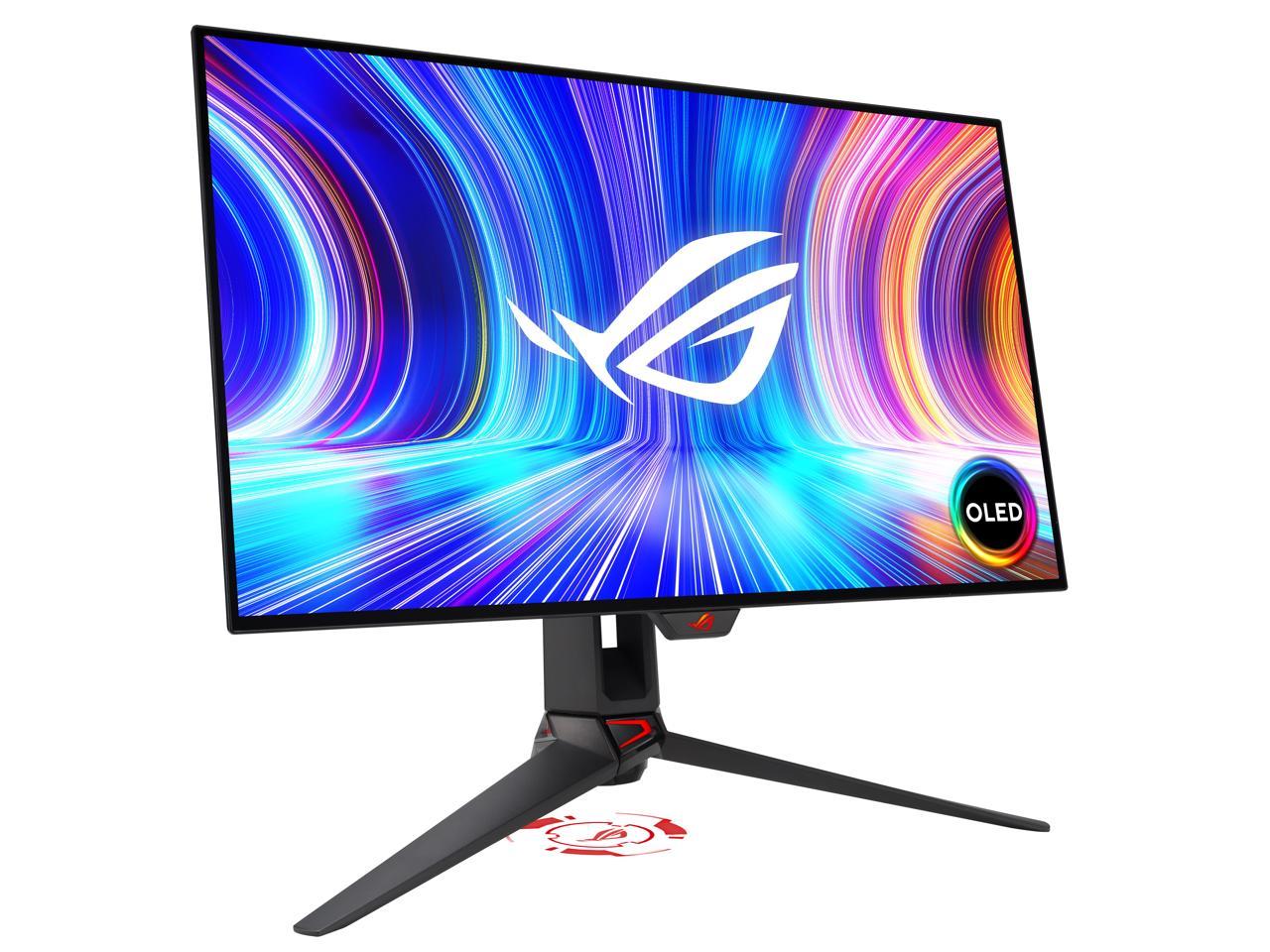 |
1,137 | ASUS VRR ASIC | 26.5″ WOLED 1440p 240 Hz | 6.9 kg | |
| LG UltraGear 27GS95QE‑B |
 |
1,199 | G‑SYNC compatible | 26.5″ WOLED 1440p 240 Hz | 7.3 kg | |
| MSI MAG 341CQP QD‑OLED |
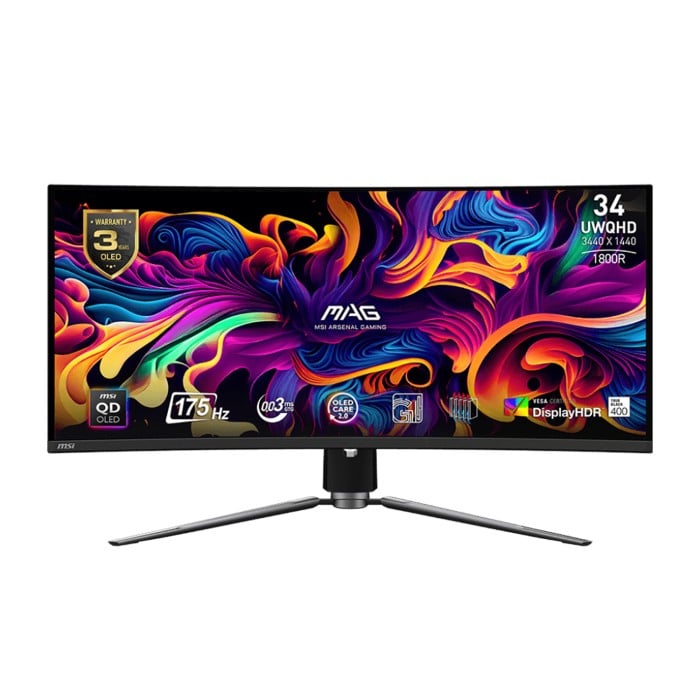 |
1,499 | MSI KVM ASIC | 34″ QD‑OLED UWQHD 175 Hz | 8.8 kg | |
| Samsung Odyssey Neo G7 43″ |
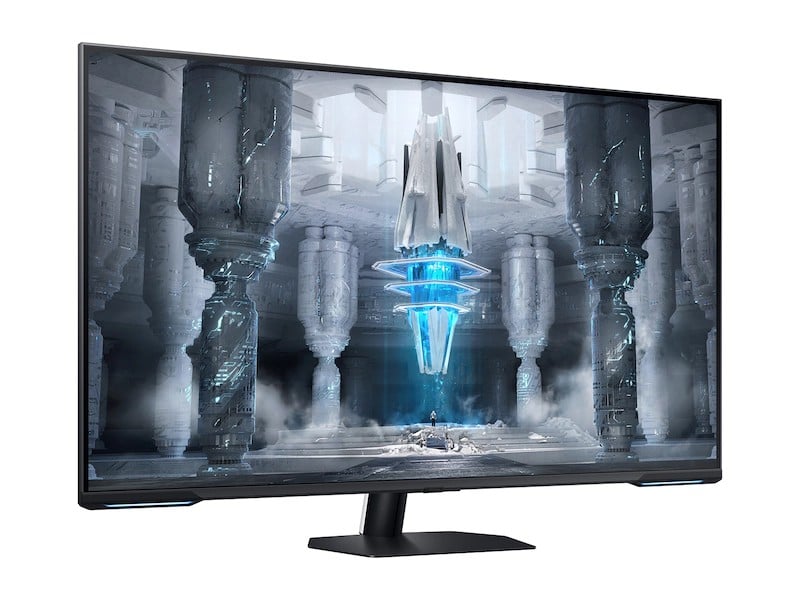 |
1,288 | Quantum Matrix Processor | 43″ Mini‑LED 4K 144 Hz | 11.7 kg | |
| Alienware AW3425DW |
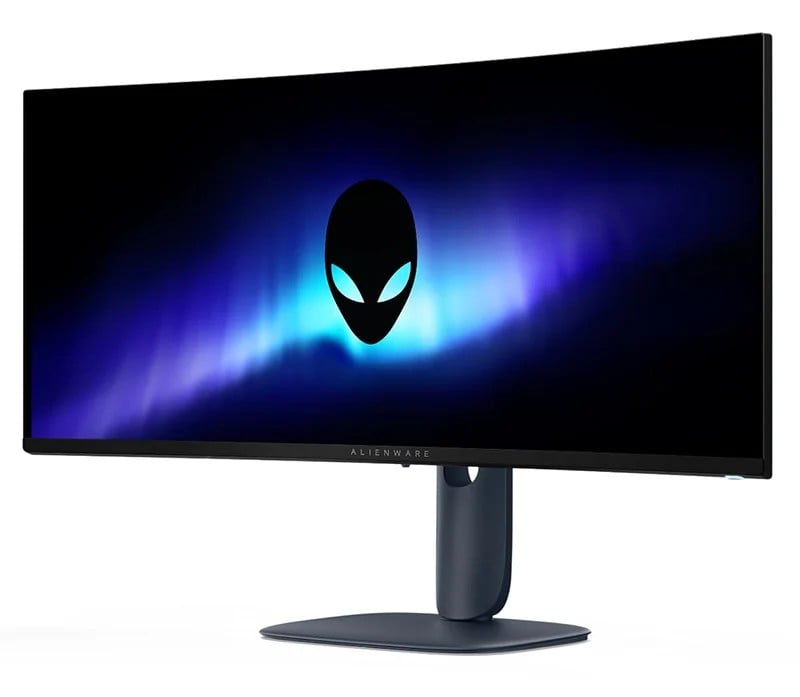 |
1,519 | NVIDIA G‑SYNC Ultimate module | 34″ QD‑OLED UWQHD 240 Hz | 8.14 kg | |
| Alienware AW3423DWF |
 |
999 | FreeSync Premium Pro scaler | 34″ QD‑OLED UWQHD 165 Hz | 9.65 kg | |
| LG UltraGear 34GS95QE‑B |
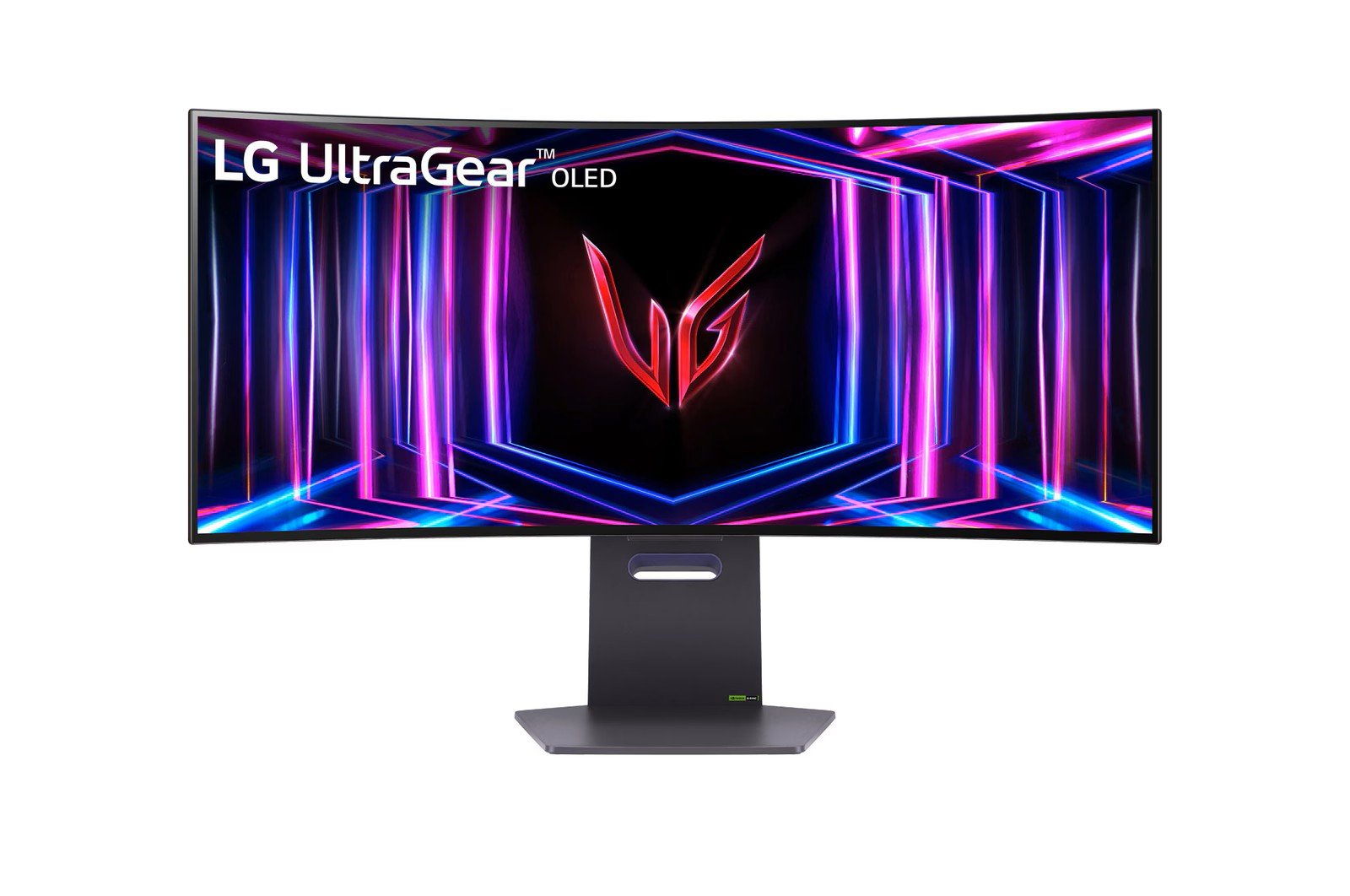 |
1,699 | LG Game Optimizer | 34″ WOLED UWQHD 240 Hz | 9.3 kg | |
| LG UltraGear 39GS95QE‑B |
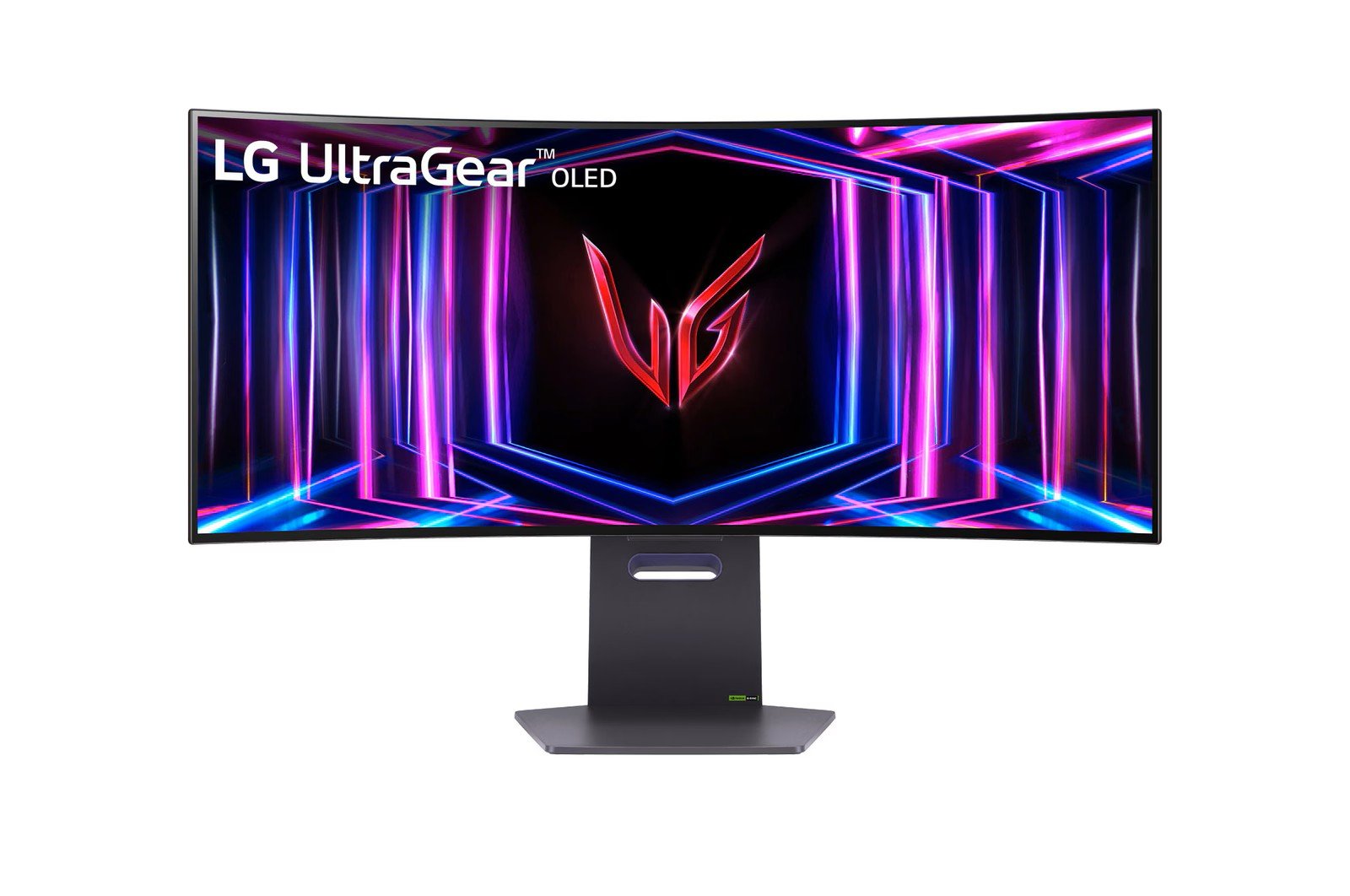 |
2,099 | LG Game Optimizer | 39″ WOLED UWQHD 240 Hz | 10.4 kg | |
| LG UltraGear 32GS95UE‑B |
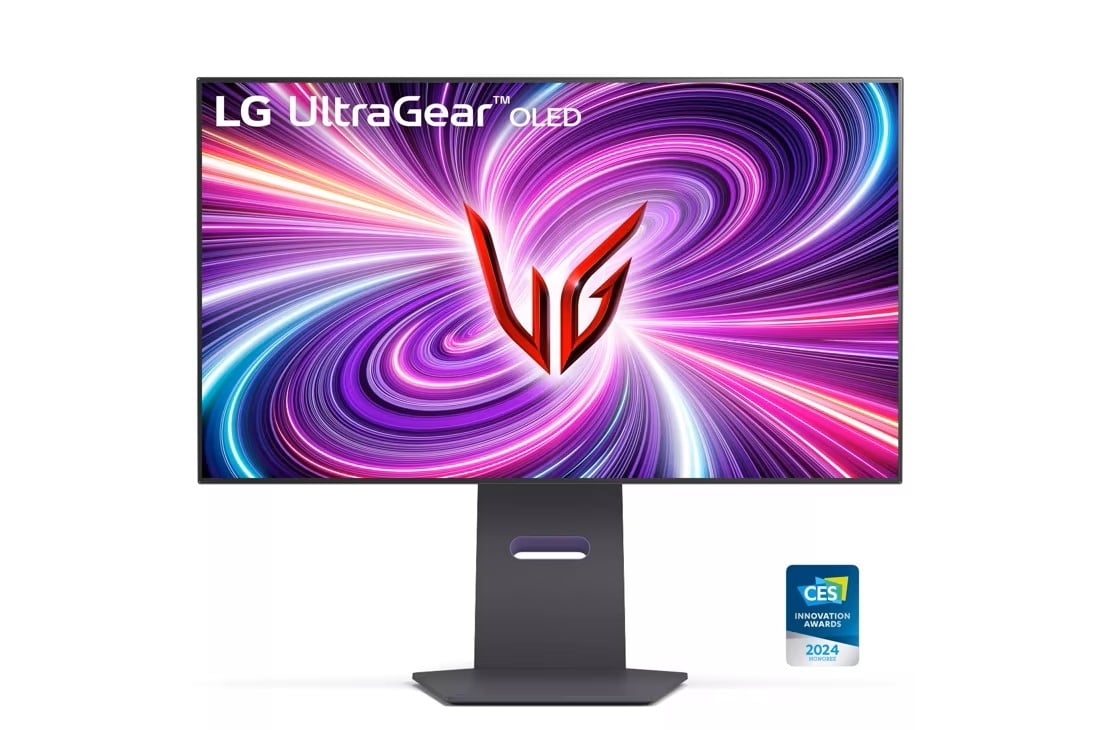 |
2,199 | LG Dual‑Mode ASIC | 32″ WOLED 4K 240 Hz / 1080p 480 Hz | 9 kg |
Buying Guide 2025: How to Choose the Best Gaming Monitor
-
Panel type: OLED vs Mini‑LED

OLED’s self‑lit pixels deliver absolute blacks, infinite contrast, and response times so fast they make CRT nostalgists cry. The trade‑off is peak brightness, though new Micro Lens Array implementations lift luminance by up to 30 percent. Mini-LEDS, meanwhile, stuff thousands of tiny backlight zones behind an IPS or VA layer, hitting eye‑watering brightness that slices through Singapore’s midday glare. They do risk blooming—bright halos around small objects—yet smart local dimming algorithms have tamed most of it. Decide if you game in a dim cave or a sunlit living room, and choose accordingly.
-
Refresh rate reality check

More hertz equals lower input latency. At 240 Hz, the delay between mouse flick and pixel change can drop below four milliseconds. At 480 Hz, that plummets further, but only twitch shooters and rhythm games expose the benefit. AAA cinematic adventures feel buttery at 144 Hz, and your GPU will thank you. Also note that DisplayPort 1.4’s bandwidth tops out at 4 K120 unless you enable DSC (compression), so plan your cable run.
-
Size vs desk depth

A common trap: measuring only diagonal size and ignoring depth. An ultrawide at 34 inches stands roughly 30 cm tall and wants 20‑25 cm of stand depth. Curved 39‑inch OLEDs creep closer to 35 cm. If your desk kisses the wall, you may end up nose‑to‑pixel, which tires eyes and neck. Grab a tape measure before impulse‑ordering during midnight flash sales.
-
Ports and console friendliness

HDMI 2.1 is non‑negotiable for PS5 and Xbox Series X if you crave 4K120 with VRR. DisplayPort 1.4 with DSC pushes 240 Hz at 1440p or 165 Hz at UWQHD without colour compression. USB‑C with power delivery is a lifesaver if your laptop is both workstation and portable Steam machine—one cable to rule them all, clearing your desk of spaghetti.
-
Warranty and burn‑in policy

LG and Dell stand out with three‑year burn‑in protection in Singapore, including replacement if cumulative image retention exceeds a set threshold. Samsung offers a year, MSI two. Read the small print: some brands demand maximum brightness under 80 percent for coverage, others run remote diagnostics before shipping a replacement. Better safe than ghost‑barred
9 Best Gaming Monitors in Singapore 2025 - Top Brands

Roger Siow
One of the first things I look at is refresh rate and response time because they directly impact gameplay smoothness. If you're into esports titles like Valorant, CS2, or Call of Duty, a 144Hz to 240Hz monitor is a must. Anything lower feels sluggish once you’ve experienced high refresh rates. For ultra-competitive gaming, 0.5ms or 1ms response time makes a noticeable difference in motion clarity, especially in fast-paced FPS games where every millisecond matters.

Fire this thing up and your retinas will wonder if someone swapped reality itself. Perfect blacks merge with a silk‑smooth 240 Hz refresh, making motion in Apex Legends look like it escaped the animator’s workstation before the ink dried. The custom heatsink inside means the panel stays cool even during seven‑hour League marathons where you forget to blink, and I appreciate that the stand weighs just 6.9 kg—light enough for a budget North Bayou arm yet sturdy enough that the cat can’t tilt it mid‑ultimate. Fan of RGB? The Aura Sync ring sneaks a soft glow on your wall, subtle rather than nightclub, and can mirror your on‑screen colours so Viper’s green smoke literally spills onto your desk.

Plop this LG on your desk and it’s like installing a professional grading suite at home. Every unit ships factory‑calibrated, so flesh tones in Cyberpunk finally look like flesh, not wax. HDR True Black 400 might sound modest on paper, but combined with WOLED contrast, it turns neon billboards into syrupy pops of colour you can almost taste. The stand adjusts high enough for my lanky 186 cm frame yet slides low enough for my kid cousin; plus, the tilt and swivel range is generous enough that you can share memes with the entire kopitiam table. Two HDMI 2.1 ports give your PS5 and Series X a proper 4k120 playground, and LG’s Game Optimizer overlay lets you tweak black stabilizer on the fly—handy when camping in Warzone’s darker corners.

I first spotted this bad boy at COMEX, wedged between RGB keyboards and a free Milo truck, and the price made my kopi spill: around S$1.3 k for a 34‑inch QD‑OLED. You get 175 Hz refresh, 0.03 ms response, and colours so vivid they make Photoshop palettes jealous. MSI also crams in a built‑in KVM switch, meaning one keyboard‑mouse pair can flip between your office laptop and gaming rig—perfect for WFH ninjas. The antiglare coating tames Singapore’s brutal afternoon sun, and despite its generous 8.8 kg heft, the stand still rotates for quick couch co‑op. My favourite Easter egg? The rear RGB strip pulses like gentle breathing instead of a rave, making it surprisingly living‑room‑friendly.

If you’ve ever dreamt of owning a private IMAX, the Neo G7 is that fantasy in 43‑inch form. Its Mini‑LED backlight oozes over 1,000 nits peak brightness, letting HDR dragons in Elden Ring blind you (in a good way) even with the curtains flung wide. Despite the size, Samsung’s matte coating annihilates reflections; you can sit in broad daylight and still spot the sniper hiding in Warzone’s rubble. The Gaming Hub UI doubles as a console and streaming dashboard—handy when your GPU decides Windows updates are more important than your game time. Height adjustment is nonexistent, so either VESA‑mount it or stack a few National Geographic magazines under the base (greenest stand riser ever).

Alienware’s new poster child pairs QD‑OLED colours with a real G‑SYNC Ultimate module, so your frames flow smoother than kaya on toast. At 240 Hz, motion clarity is so sharp you’ll swear your crosshair reads your mind. Cooling vents line the top panel, preventing OLED heat build‑up and keeping fan noise nonexistent. Dell’s Alienfx lighting can sync to system temps, so the rear glow flares red when your GPU hits sauna mode—useful if you don’t run monitoring software. White shell aesthetics look striking in minimalist setups, but keep wet wipes handy unless Cheetos dust orange is your vibe.

Two‑year‑old tech often feels stale; not this. Dell lobbed out NVIDIA’s G‑SYNC module in favour of FreeSync Premium Pro, shaved the price, and somehow kept most of the magic. At 165 Hz, narrative adventures like Baldur’s Gate 3 glide beautifully, and the fanless design means absolute silence while your party debates romancing Astarion again. The curve is a subtle 1800r, easy to adjust to if you’re new to ultrawides, and Dell’s three‑year burn‑in warranty means you can marathon Football Manager without fear of permanent scorebars. I once hauled mine through Changi in checked luggage (please don’t copy me) and it survived unscathed—a testament to Alienware’s tank‑grade packaging.

Imagine a screen bent aggressively enough to hug your peripherals—that’s the 800R curve at play here. The wrap‑around effect is pure tunnel vision in F1 2024; you lean into corners subconsciously. Rear Hexagon lighting casts a soft bias glow that reduces eye strain during 1 am grind sessions, and the practically invisible bezels make multi‑monitor setups appear seamless. LG’s Game Dashboard OSD pops up with a single joystick flick, showing refresh, response mode, and even crosshair overlay if you’re that person. Stock is scarce in SG, so if you see one, reserve before the next streamer‑review drops.

Take everything good about the 34GS, stretch it to a glorious 39 inches, and you’ve got the 39GS95QE‑B. The 800R arc hugs you so completely you forget your lanky teammate raging on Discord. At 240 Hz, even sweeps in Rocket League look like physics demos rather than a monitor drawing frames. Dual HDMI 2.1 ports plus DisplayPort 1.4 ensure every device gets full‑bandwidth love, and the stand’s cable channel is wide enough for fat braided DisplayPort cords—tiny blessing, big difference. The downside? Desk depth. Anything shallower than 35 cm means you’ll involuntarily develop T‑Rex arms.

Meet the Dr Jekyll and Mr Hyde of monitors. One button toggles between razor‑sharp 4 K240 for God of War epics and blur‑free 1080p480 for sweaty CS2 clutches. LG’s new Micro Lens Array brightens HDR scenes so explosions glow without blooming halos. Hidden‑behind‑glass “Pixel Sound” speakers vibrate the screen itself, giving surprising bass and keeping desk clutter minimal. Overclockers will love the on‑screen crosshair that changes colour based on luminance, helping track enemies in dark corners. Just remember: Windows desktop at 1080p stretches UI like a boomer’s WhatsApp font.

Roger Siow
At the end of the day, your monitor should match your playstyle and hardware. There’s no point in getting a 360Hz monitor if your PC can’t push high FPS, and there’s no use for a 4K HDR display if you mostly play esports titles at 300FPS.
Frequently Asked Questions answered by ProductNation.co team
Will OLED burn‑in still haunt me?
Much less. All nine monitors cycle pixel refresher routines after you power down. My AW3423DWF has run nightly since 2023 with zero logo ghosts.
Is 480 Hz a gimmick?
Not if you play tactical shooters. I felt smoother crosshair micro‑adjustments in CS2, but anything slower than Overwatch probably won’t reveal a difference beyond 240 Hz.
Flat or 800r curve?
Curves wrap peripherals into your vision so less neck swivel. For video editing a flat panel keeps timelines straight. Decide if your life is more spreadsheets or speed laps.
Can an RTX 4070 Super handle 4 K240 Hz?
Only in less demanding titles or with DLSS 3 frame generation. For AAA blockbusters you will drop settings or resolution.
Where to score deals?
Wait for IT Show, COMEX, CEE, and SITEX. Vendors toss free chairs, mice, and Grab vouchers like confetti on the last day.
Conclusion
There we have it: nine pixel powerhouses polished for every flavour of gamer, whether you’re craving ASUS’s lightning‑fast 27‑inch or Samsung’s living‑room‑eating 43‑inch giant. The buffet has never been richer, and the price tags have never been kinder. Your display is crucial to consider if you’re a severe PC player. You’ll need a monitor that can render the action without subjecting you to blurred images, flicker, tearing, and other motion distortions and a gaming PC with a potent graphics card.



Roger Siow
When I review a product, I go beyond just reading the spec sheet—I believe in real-world testing and giving my audience an authentic experience of how the product actually performs. Whether it's a smartphone, a gaming laptop, or a smart home device, I always put myself in the shoes of the end-user and ask: Is this worth your money?